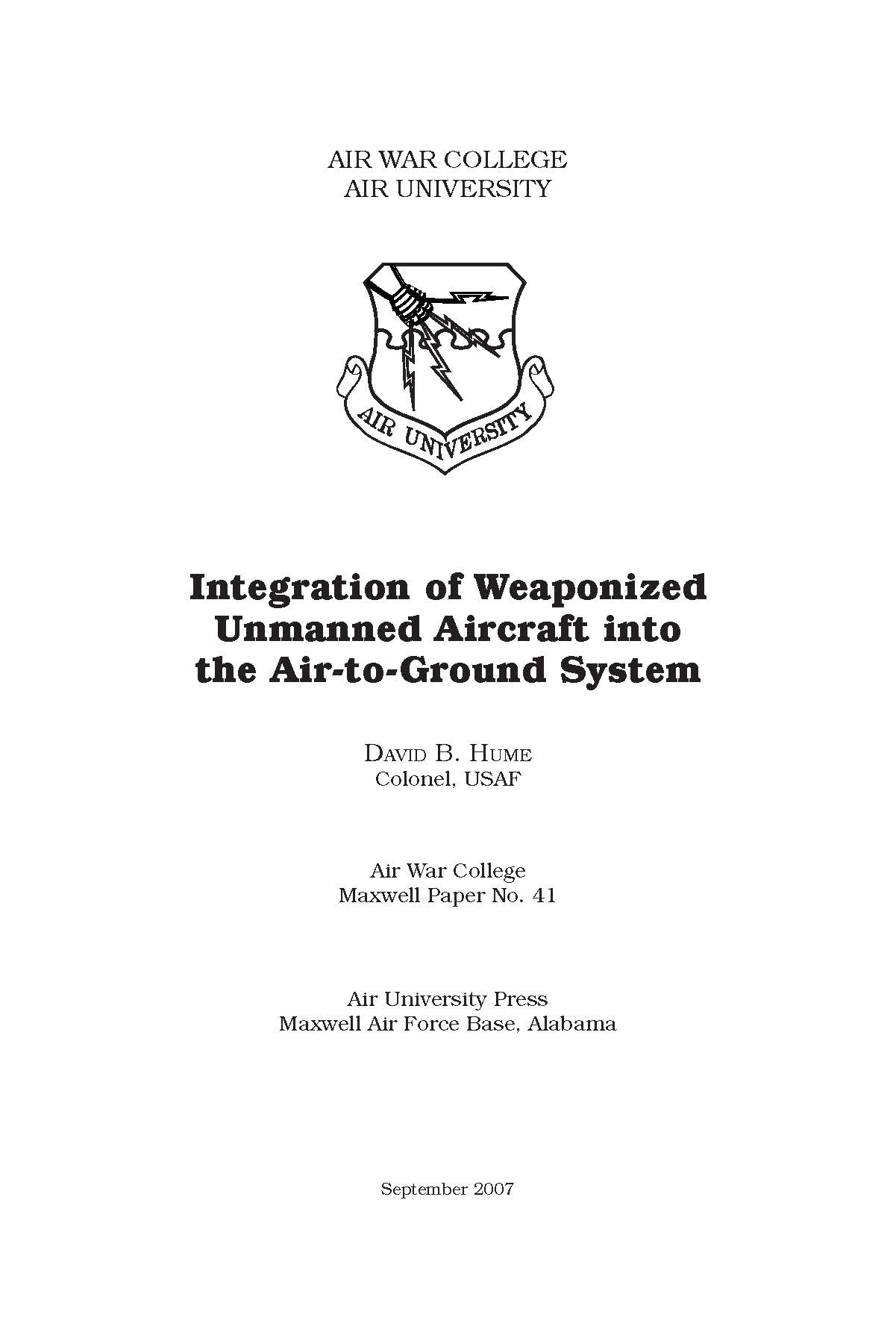 Unmanned aircraft (UA) have changed the nature of warfare. Their persistence, economy, and utility make them indispensable on the battlefield, but the lines between the intelligence, surveillance, and reconnaissance (ISR) and ground attack missions of the UA are now blurred. Within the Air Force, the MQ-1 Predator does not fit seamlessly into the armed reconnaissance role. The ways ISR and ground attack assets are doctrinally resourced, tasked, and flown in support of requirements conflict with each other. The command and control (C2) structure of the theater air control system/Army air-ground system (TACS/AAGS) is not optimized to support the integration of UA operations required in tomorrow’s battlespace. The Army is fielding the weaponized Warrior UA system, which crosses service lines into what is traditionally and clearly an Air Force mission. This study examines the issues of integrating weaponized UAs into the future battlespace from the standpoint of doctrine, operational concepts, and roles and missions. To address the disconnects in UA missions and systems, the Air Force must treat weaponized UAs like close air support and merge the Predator and Warrior requirements.
Unmanned aircraft (UA) have changed the nature of warfare. Their persistence, economy, and utility make them indispensable on the battlefield, but the lines between the intelligence, surveillance, and reconnaissance (ISR) and ground attack missions of the UA are now blurred. Within the Air Force, the MQ-1 Predator does not fit seamlessly into the armed reconnaissance role. The ways ISR and ground attack assets are doctrinally resourced, tasked, and flown in support of requirements conflict with each other. The command and control (C2) structure of the theater air control system/Army air-ground system (TACS/AAGS) is not optimized to support the integration of UA operations required in tomorrow’s battlespace. The Army is fielding the weaponized Warrior UA system, which crosses service lines into what is traditionally and clearly an Air Force mission. This study examines the issues of integrating weaponized UAs into the future battlespace from the standpoint of doctrine, operational concepts, and roles and missions. To address the disconnects in UA missions and systems, the Air Force must treat weaponized UAs like close air support and merge the Predator and Warrior requirements.
Author(s) • Col David B. Hume, USAF
Year • 2007
Pages • 44
ISSN • 2575-7539
AU Press Code • MP-41